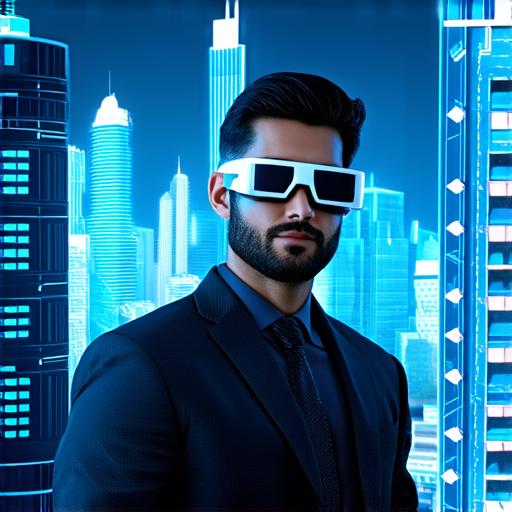Augmented reality (AR) is a technology that enhances or “augments” real-world environments with digital information, such as graphics, sounds, and haptic feedback. AR glasses are one of the most popular ways to experience AR, allowing users to see the world in a new light by overlaying digital content onto the physical environment.
What are Augmented Reality Glasses?
Augmented reality glasses are wearable devices that use cameras, sensors, and software to overlay digital information onto the user’s field of vision. This technology is also known as “smart glasses” or “AR glasses,” and it allows users to see the world in a more interactive and immersive way.
How do Augmented Reality Glasses Work?
The basic principle behind AR glasses is to capture the real-world environment through the cameras and sensors on the device, then overlay digital content onto that environment using advanced computer vision algorithms. This process is known as “object recognition,” and it allows the AR software to identify objects in the real world, such as landmarks or people, and use that information to create an interactive experience for the user.
AR glasses can also use GPS data and other location-based technologies to provide users with contextual information about their surroundings. For example, if a user is standing in front of a museum, the AR software might display additional information about the exhibits inside, or it might suggest nearby landmarks or attractions to explore.
What can Augmented Reality Glasses be Used for?
There are many different applications for AR glasses, depending on the needs and interests of the user. Some common use cases include:
-
Education and Training: AR glasses can be used to provide students and trainees with a more interactive and immersive learning experience. For example, medical students might use AR glasses to practice surgeries or visualize anatomy in 3D, while pilots might use AR glasses to simulate flight scenarios.
-
Gaming and Entertainment: AR glasses can also be used for gaming and entertainment purposes. For example, users might play AR games that superimpose digital objects onto the real world, or they might watch immersive movies or live events through an AR headset.
-
Navigation and Exploration: AR glasses can provide users with contextual information about their surroundings, making it easier to navigate new places and explore unfamiliar environments. For example, a user might use AR glasses to find the nearest restaurant or tourist attraction, or they might use the software to identify historical landmarks or geological features.
-
Shopping and Retail: AR glasses can also be used in the shopping and retail industries to provide customers with more personalized and interactive shopping experiences. For example, a user might try on clothes virtually using an AR headset, or they might use the software to visualize how furniture would look in their home before making a purchase.

Summary
Augmented reality glasses are a powerful tool that can be used for a wide range of applications, from education and training to gaming and entertainment, navigation and exploration, and shopping and retail. As AR technology continues to evolve, we can expect to see even more innovative and immersive uses for these devices in the future.
